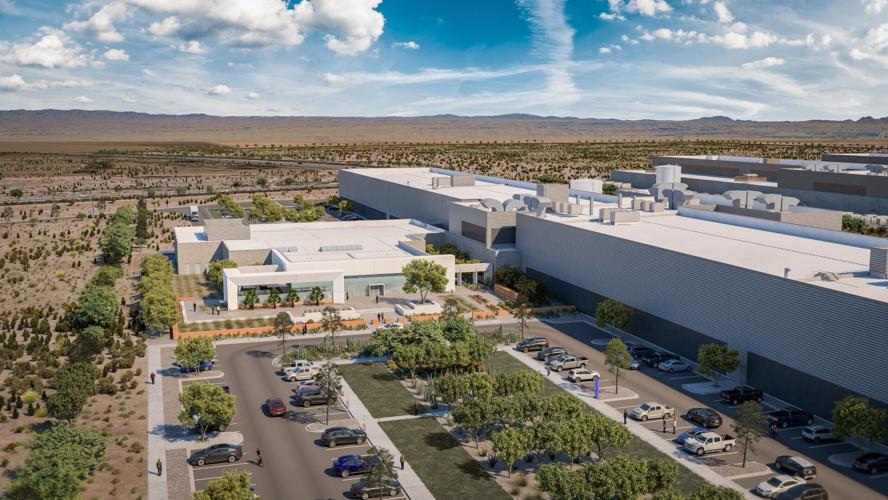
Project Blue. What a catchy name. Evokes images of clear skies. And water. Which, in the desert, are mutually exclusive.
So far, this project, if ãblueã at all, seems to be colored deep indigo ã the shade of shadows.
Non-disclosure agreements have kept key information in the dark. Like whom the operator of the sprawling data center will be. And what they will pay for their enormous, hundreds-of-megawatts power consumption (compared to long-suffering residential customers who just got hit with a 14% rate-increase proposal).
The doubletalk of replenishing ãall consumptive water lossesã is just that. In our perennially thirsty environment, no matter how much lipstick goes on the pig, a water-guzzling industry deserves close scrutiny.
According to a ãfact sheetã released by the city last week, if the two centers envisioned within the city limits as part of Project Blue are built out, the combined water usage would total 1,910 acre-feet per year.
People are also reading…
In slightly more comprehensible terms, thatãs a shade over 1.7 million gallons of water per day.
Thereãs also nothing stopping Project Blue from using even more than that staggering projection. Of course, the mystery operator would pay a premium for the overuse of water, but thereãs no evident contractual limit on how much they could draw.
Also worth factoring into this is that some very good reporting from elsewhere has made the point that promises made to governmental bodies by data-center developers around the world frequently have not been kept.
Tucsonans have a right to know who the operator of this massive plant will be. That should be non-negotiable. The stakes are too high to greenlight this project without being able to assess how it might be managed.
Second, the terms of its private deal with TEP should be disclosed.

This is a new Arizona data center in Mesa (by Meta) with five buildings. A separate data center complex planned near the Pima County Fairgrounds in the ǵüµAPParea, to be developed by an undisclosed company, will have up to 10 buildings.
Some business deals get done in private because negotiations work better away from the glare of public opinion. But government business ã the peopleãs business ã should never value non-disclosure over the peopleãs right to know.
The peopleãs land and water, the peopleãs power, the peopleãs money must be handled in transparent, public fashion. Not only are we, the voters and taxpayers, entitled to know the decisions our governments make on these matters ã but we are also entitled to understand the information upon which the decisions are based.
Some of our most respected officeholders and business leaders are foursquare in favor of this project ã people like Rex Scott, Pima County Board of Supervisors chair, who has not minced words about his support.
ãThe boost it could provide to our local economy may well be transformative,ã Scott says.
On the Opinion pages of the ǵüµAPP, Pat DeConcini, another well-respected community leader, wrote that ãthe benefits will be profound ã our police, fire and public safety can be properly funded and thousands of Tucsonans most in need can receive the help they deserve.ã
But significant doubts and questions remain.
The New York Times, in a hard-hitting story last week about data centersã water use, said big techãs data-center owners often want to build where power can be bought relatively cheaply, because of the prodigious amount of power they use ã even if those locales are in drought-stricken places.
In the New York Times story, Newsha Alami, a hydrologist and director of urban water policy at Stanford, said, ãData center companies often demand as much water as they can get, using the tax revenue they pay as leverage.ã
She added that tech companiesã priority to build where power is cheap and dependable has exacerbated water shortages across the world.
ãWater is an afterthoughtã for tech companies, she said. ãThe thinking is, ãSomeone will figure that out later.ãã
And, as Pima County Supervisor Jen Allen pointed out last week, ãdata centers beget data centers,ã because once power and water infrastructure is built, other projects follow.
All of these facts, including the industryãs spotty track record on keeping pre-project promises, must be taken into account before the ǵüµAPPCity Council greenlights this huge project. We must know who the operator will be, how much power the project will use and how much they will pay for it. And we need to do some hard math to determine whether it really makes any kind of sense to invite in an industry to use 1.7 million gallons of our precious water every day of the year.
Every step of the way, local officials must demand transparency and carefully fact-check the promises made. And the public must be kept in the loop.
It was recently said that if Project Blueãs prospective operator is outed, ãthey will walk.ã
Maybe thatãs not the worst thing that could happen.
Follow these steps to easily submit a letter to the editor or guest opinion to the ǵüµAPP.




